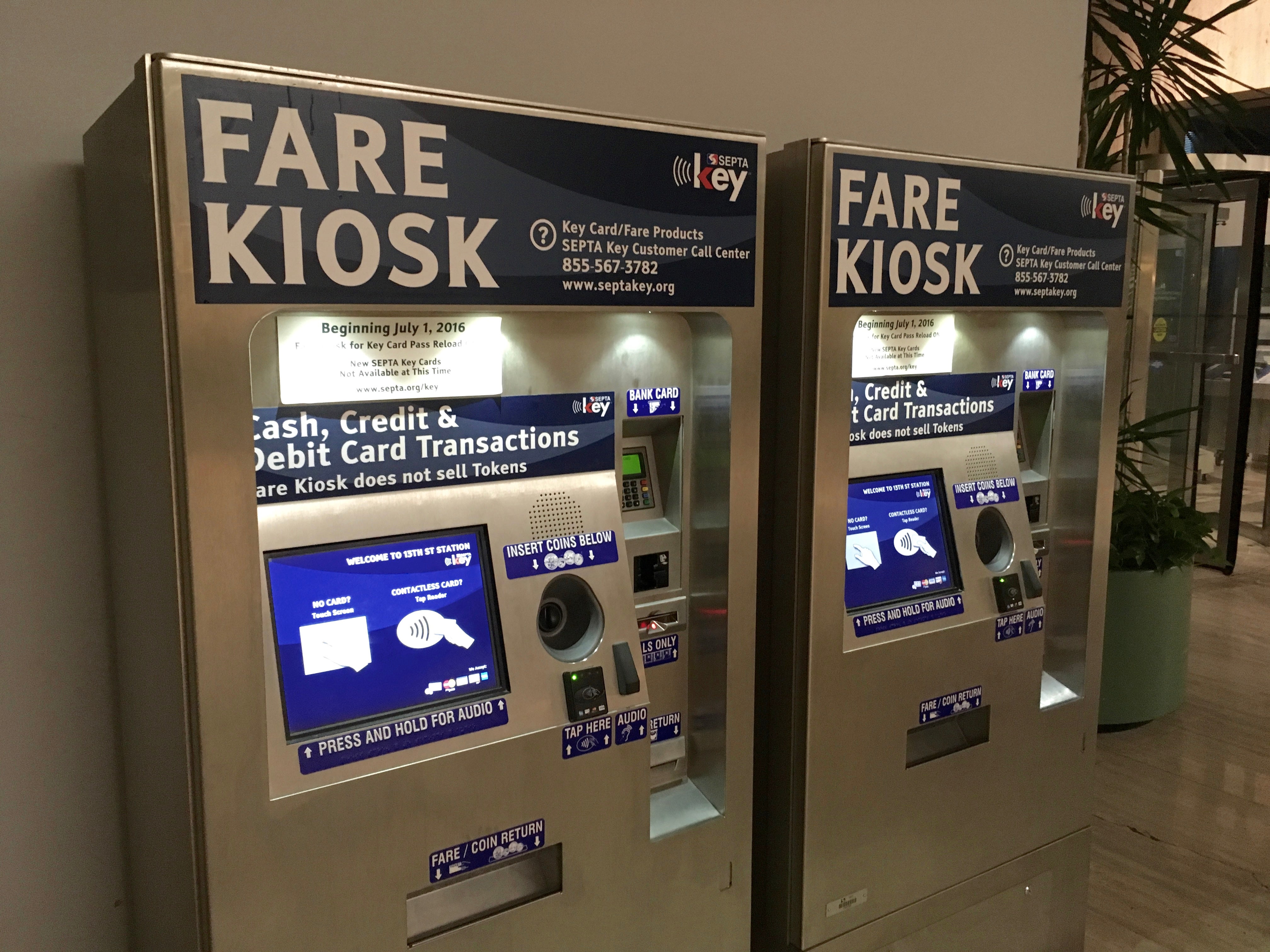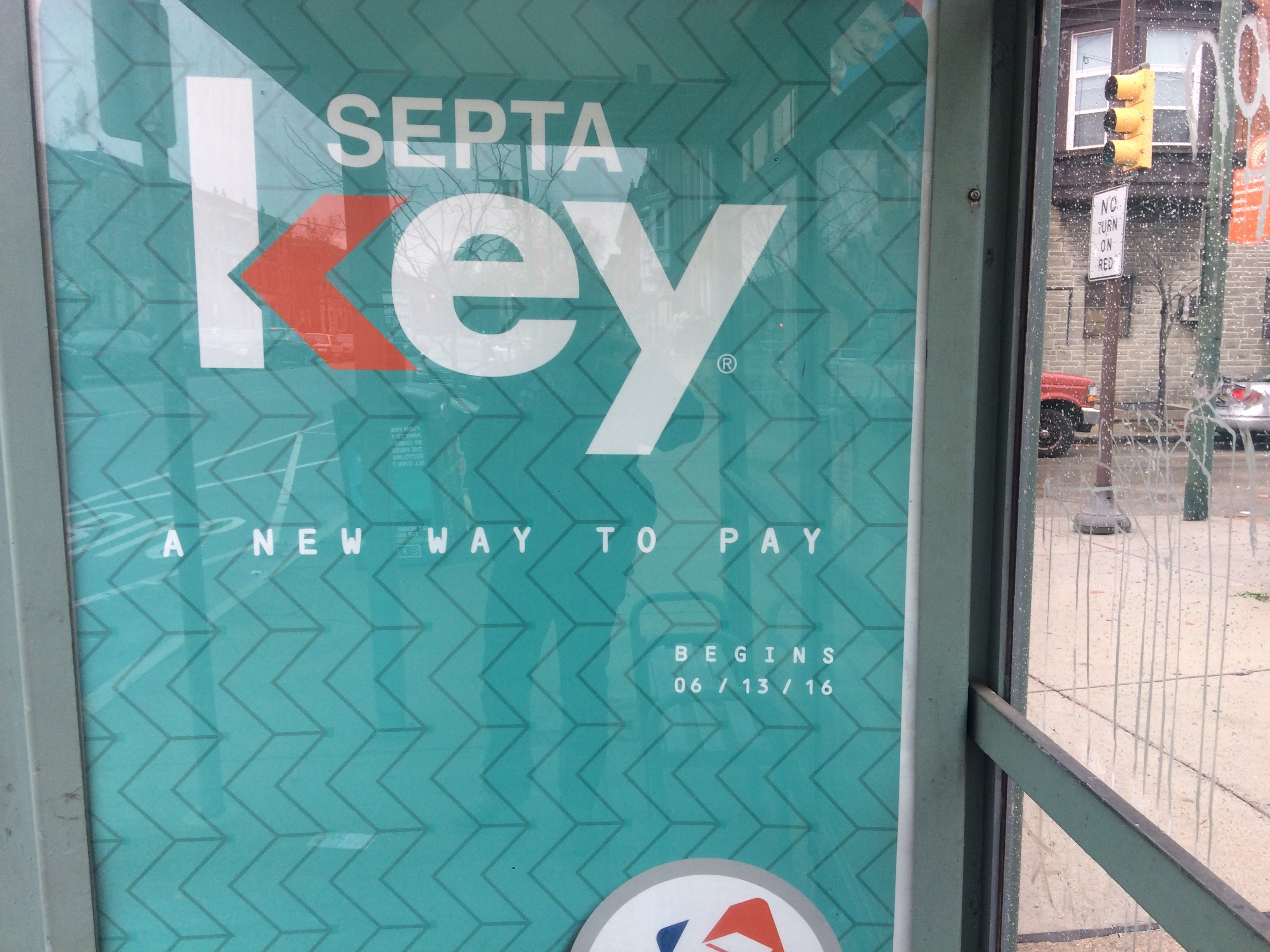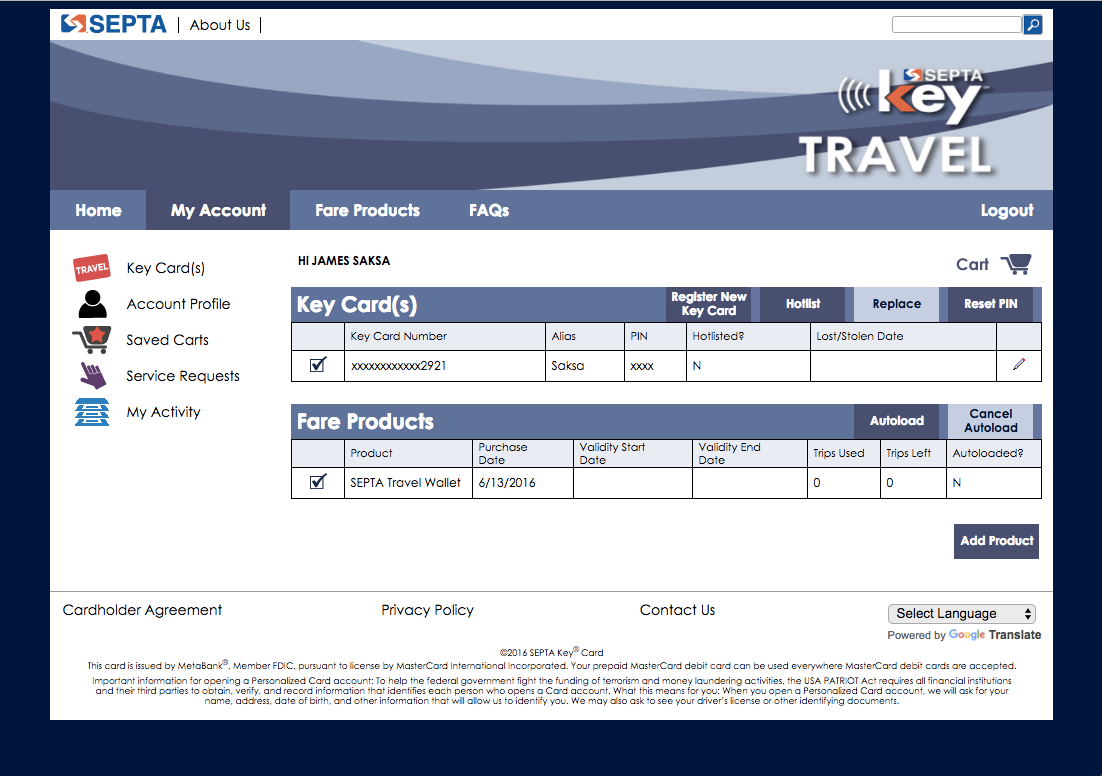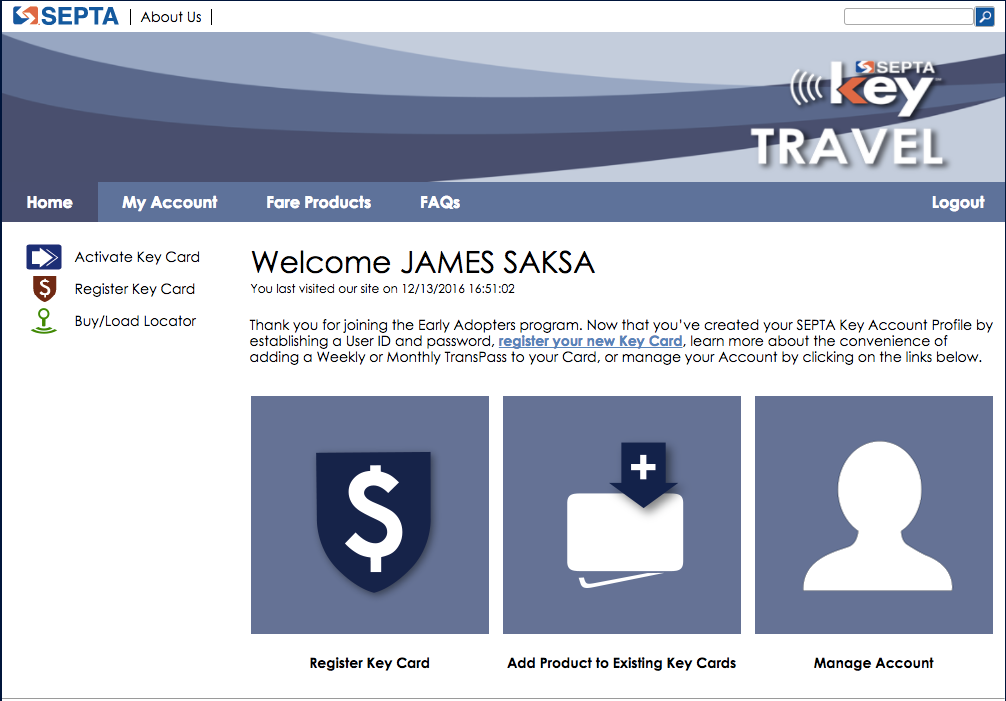Slow rollout of SEPTA Key leaves riders confused

All across Philadelphia, you can find ads heralding the arrival of a brilliant public transit-riding future.
SEPTA Key
A new way to pay
Begins 06/13/16
But that last line is causing a bit of confusion among the riding public. While semi-public testing of the new fare payment system began in June, a full, open-to-all rollout is still months away. And in the interim, beta-users are running into frustrations that go beyond the expected smattering of system slipups.
Simply put, SEPTA Key is not user friendly. Compound the confusing messaging with a clunky online experience and SEPTA Key’s rollout is hitting its share of speedbumps.
The septakey.org website is temporary, but cardholders are already frustrated by the user experience. Hiccups, bugs, befuddlement, are making it harder for people to actually use SEPTA Key, which is the point of this beta testing period.
How we got here?

Kiosks for SEPTA Key cards started cropping up in subway stations a little over two years ago, as a small testing phase limited to a handful of SEPTA employees began. Soon after, new SEPTA Key validators started replacing the old turnstiles, fueling rumors that the new fare payment would soon go live and regularly bottlenecking passengers trying to pay with tokens, fare cards or exact change at the remaining few remaining old-style turnstiles or cashiers.
But as hardware upgrades spread to all of SEPTA’s buses, trolleys, and subway stations, the software lagged far behind. Two and a half years behind schedule, SEPTA began its “Early Adopter” program in June, allowing 10,000 passengers to beta-test the new fare system.
For the first few months, Early Adopters were limited to purchasing daily, weekly, or monthly passes. To join, riders had to use kiosks at a limited number of stations or travel to SEPTA’s Headquarters at 1234 Market Street to purchase and add value to a new card. Over the summer, SEPTA allowed a few more Early Adopters to pick up fare cards. As of today, SEPTA has issued 22,374 Key cards.
The piecemeal expansion of the Early Adopter program, ubiquity of the (often inactive) hardware, and the misleading “Begins 6/13/16” advertisements combined led some riders to try picking up their own SEPTA Key card only to be told that they weren’t yet available, or were only available at 1234 Market Street, or unable to add value online.
Last month, SEPTA expanded the Early Adopter beta test to include the Key Card’s “Travel Wallet” function, a debit account on the card that effectively replaces tokens and transfer tickets. At the time, SEPTA intended to make it possible to activate and load the Travel Wallet function only at 1234 Market Street.
SEPTA expanded the number of locations where Key holders can add money to their Travel Wallet this week, but it did not expand the number of cards available. Now riders can also add money at 15th and Market, 69th Street Transportation Center, Olney Transportation Center, and the Frankford Transportation Center. But only those who signed up already can experiment with the Travel Wallet.
Despite the advertisements, SEPTA Key is still in the “very early stages” of the program, said Kevin O’Brien, the senior project manager for the new fare system. “We are incrementally rolling this out in order to avoid major problems, and trying them as small problems, as part of the beta test.”
Despite intending to initially limit Travel Wallet reloads to in-person transactions, some existing Key holders managed to load their cards online. That’s what happened to Dena Driscoll, an East Passyunk resident in her 30s who picked up her SEPTA Key during the initial rollout in June and had been using monthly passes on it since without problem. “Then the wallet option came out, and with Thanksgiving week on the 21st, I was like ‘I’ll do the wallet’ because it popped up when I went online as [an available] product.” The transaction appeared to work online, but when Driscoll attempted to use it to board the Broad Street Line, she was declined.
Explaining to the SEPTA customer service reps at the station that she filled her Travel Wallet online, Driscoll said they calmly replied, “That’s impossible. You couldn’t have loaded this online.”
Driscoll had hit a bug in SEPTA Key’s system, letting her add money to her account before that function was fully activated. Later, the online system prevented her from reloading her weekly pass, a subsequent error stemming from her Travel Wallet snafu. Eventually, after multiple talks with SEPTA service reps, she got things squared away and is back to a monthly pass.
Driscoll said she understands that bugs happen—she recognizes that the program is still in a testing phase—but still found the service representatives’ blanket refusals to accept her account of what happened frustrating. She tried in person, in tweets to @SEPTA_Social, and finally over the phone.
“When I called [the next day], they were still sticking to this point that it was impossible that I couldn’t have done it online. Then they admitted it was their system that messed up, and that they were able to do it online. So, I kinda felt gaslighted,” she said with a laugh.
O’Brien admitted to PlanPhilly that there were problems with the website, and some functionalities may seem available before they are actually ready. “Part of the problem with what they can see and what people are figuring out on the web is that there are some functionalities related to Travel Wallet that if you can figure out how to do it, you can do it,” said O’Brien. These haven’t been announced yet, he said, because “it’s not fully functional and there may be bugs related to it, so people could have problems.”
Search others for their virtues and thyself for thy vices
Driscoll’s experience may be indicative of a larger problem with SEPTA Key, a project that’s been designed from the top-down. The user’s experience, or UX, seems to be an afterthought.
The contractor responsible for implementing SEPTA Key, ACS Transport Solutions Group, also built and operates the user website. According SEPTA spokesman Andrew Busch, ACS plans to build a new, responsive mobile site at some point. There’s no estimate on when that might happen, meaning customers will have to learn how to navigate the system as is, rather than redesigning the online system to respond to customer needs.
PlanPhilly reviewed SEPTA Key’s website with Geoff DiMasi, principal and design researcher at ‘Punk Ave, a software, web development, and UX design firm in Philadelphia.* DiMasi, who says he rides SEPTA a few times a month, said the key to good design is to approach things like a customer would.
According to DiMasi, good UX means a system is intuitive to use and doesn’t require a ton of added explanation. Designers should use terms customers understand, not technical jargon, and anticipate user needs.
“All I’m thinking about is how I’d use this, and where would I get confused, and what I’d rather do,” said DiMasi. He found plenty of confounding places to improve upon.
Currently, the website sticks with technical jargon, relying on non-intuitive terms like “fare products,” “Buy/Load Locators” and “Travel Wallet”. That’s fine for internal discussions, but could confuse the average rider.
DiMasi recommended some straightforward shortcuts for common user needs: Add $10 to card; Add $20 to card; Add Weekly pass; Add monthly pass. Some of the features customers will probably use less, like checking out their trip history or requesting a replacement card, could be relegated behind menu pages.
Right now, SEPTA Key holders that want to add a weekly or monthly pass have to click on “Add Products to Existing Key Cards” from the main page.
Once on the main page—which is also the “My Account” page—users see plenty of features that aren’t yet activated, or rely on jargon. For example, if you want to report a card lost or stolen, don’t go to “Service Requests.” You’ll want to click on “Hotlist” instead.
When this reporter submitted a service request to try reporting a lost card (which itself required going through a labyrinthine series of currently pointless drop-down boxes that didn’t offer any real options) it went unanswered for more than a week, and only after I found the Hotlist option.
Not that it mattered. Despite encouraging all Early Adopters to register the card so that it could be replaced, I was told I would have to go to 1234 Market Street in person to get a new one. That information contradicted reports I got from SEPTA as a reporter affirming that no new cards were available. Later, SEPTA clarified that I could replace my Key Card, but the Travel Wallet function would not be available.
“There are a couple of ways to approach software like this,” said DiMasi. “You can say it’s difficult to use, so let’s hire more trainers or more customer support. Or you can say: Let’s pay attention to where people are getting stuck and let’s tweak the system.”
So far, SEPTA seems to prefer the former, training hundreds of SEPTA Key Ambassadors and deploying them to busy locations during the rollout.
That doesn’t bode well for when SEPTA decides to introduce some of the more complicated features, such as allowing users to pay using their phones via Google Wallet or Apple Pay. The online system will only get more complex.
While the kiosks remain relatively easy to use, they will get more complicated, too.
For now, SEPTA reiterates that its current interface is going to change and that it’s focused on continued beta testing.
But it’s not too late for SEPTA to change tracks, which would improve its testing and clarify pinch points for cardholders.
“We recognize that some of the website screens can be improved, and are working with [ACS] on that,” wrote spokesman Andrew Busch. “Also, we plan to incorporate some input from users in the development of the new responsive/mobile site.”
“The good news is, this is a really simple thing—a really simple tool,” said DiMasi. “What’s beautiful about software is that you can rollout changes incrementally. So it doesn’t have to be a massive process to just improve and tweak the system.”
That’s a relatively radical approach to doing business for an agency like SEPTA—you don’t incrementally tweak a bridge in need of replacement—but one common to the programming world. Will SEPTA respond to the disconcerting difficulty some Early Adopters are facing now?
*DISCLOSURE: P’unk Ave designed PlanPhilly.com and PlanPhilly maintains a service contract with P’unk Ave.
WHYY is your source for fact-based, in-depth journalism and information. As a nonprofit organization, we rely on financial support from readers like you. Please give today.





